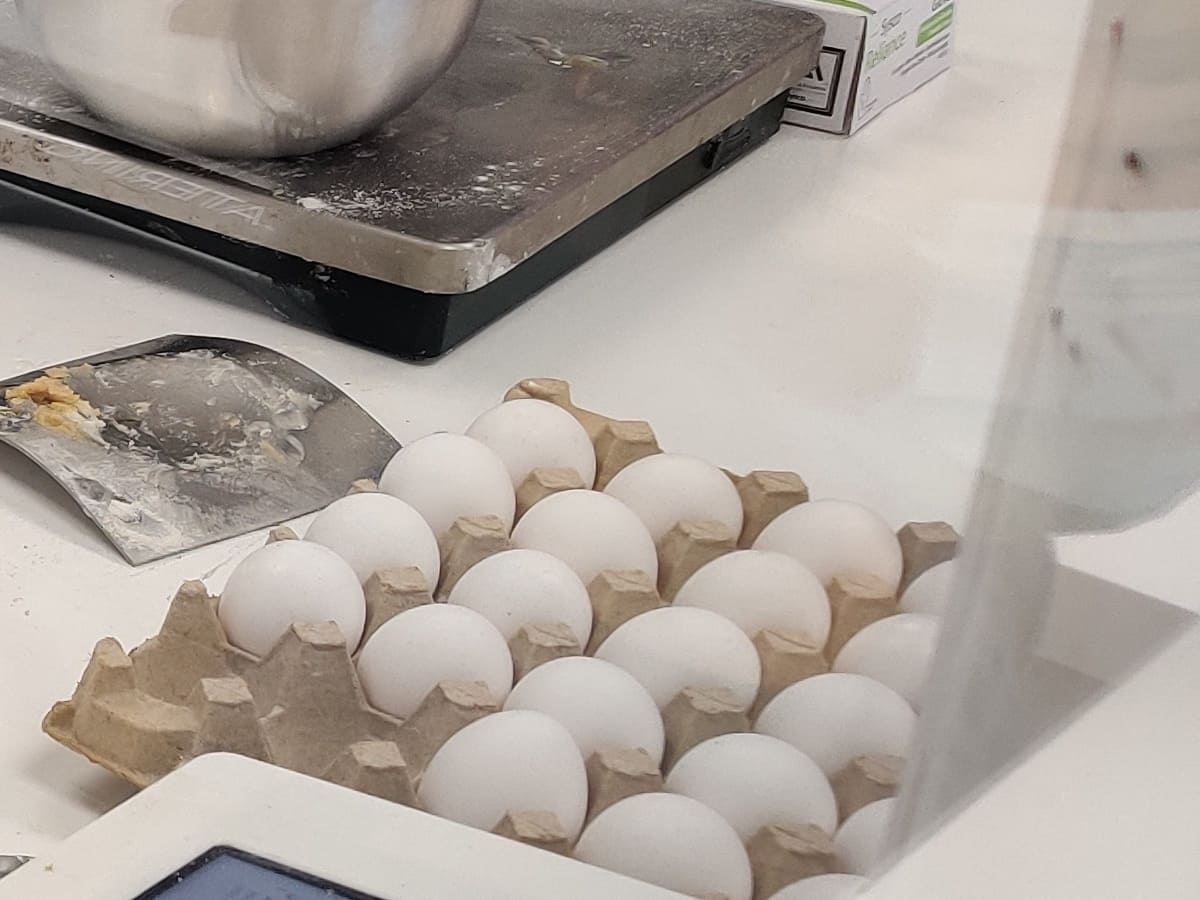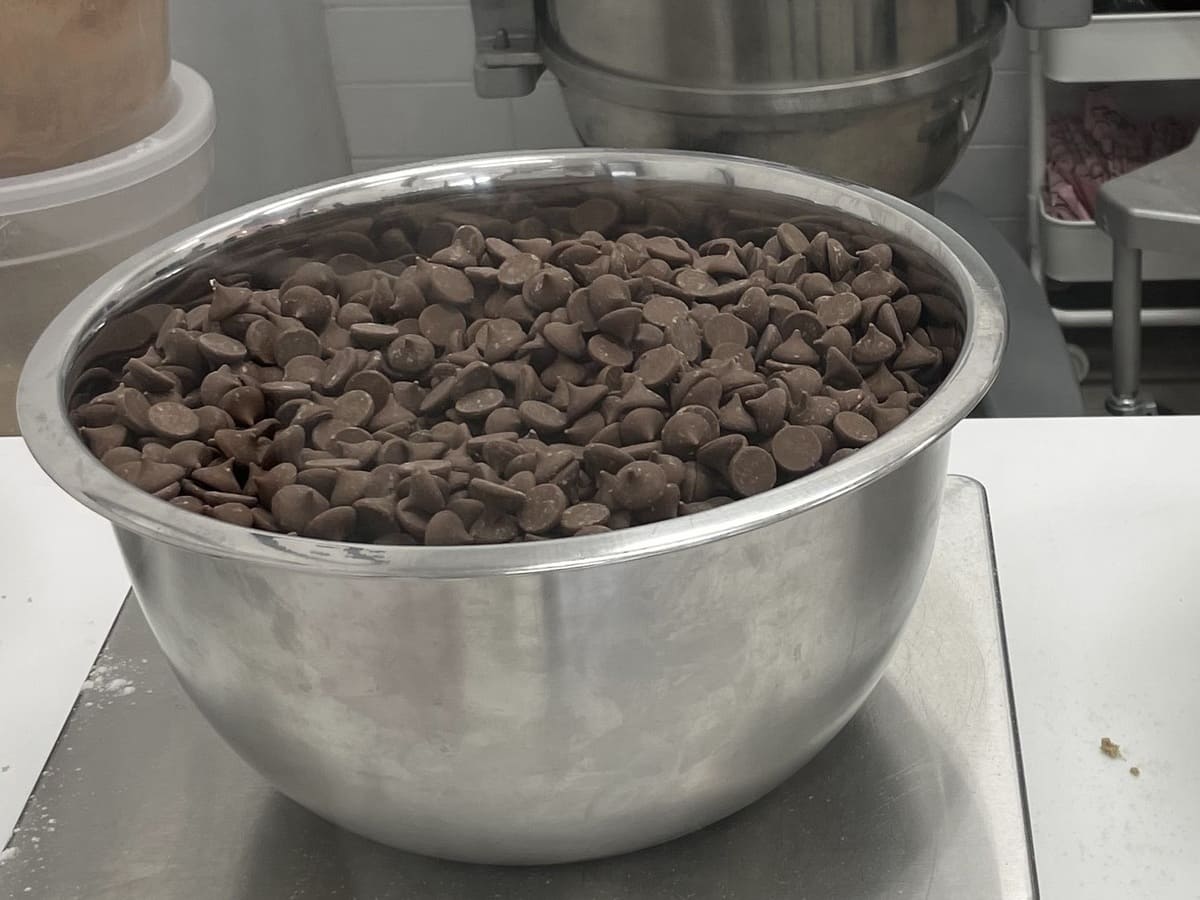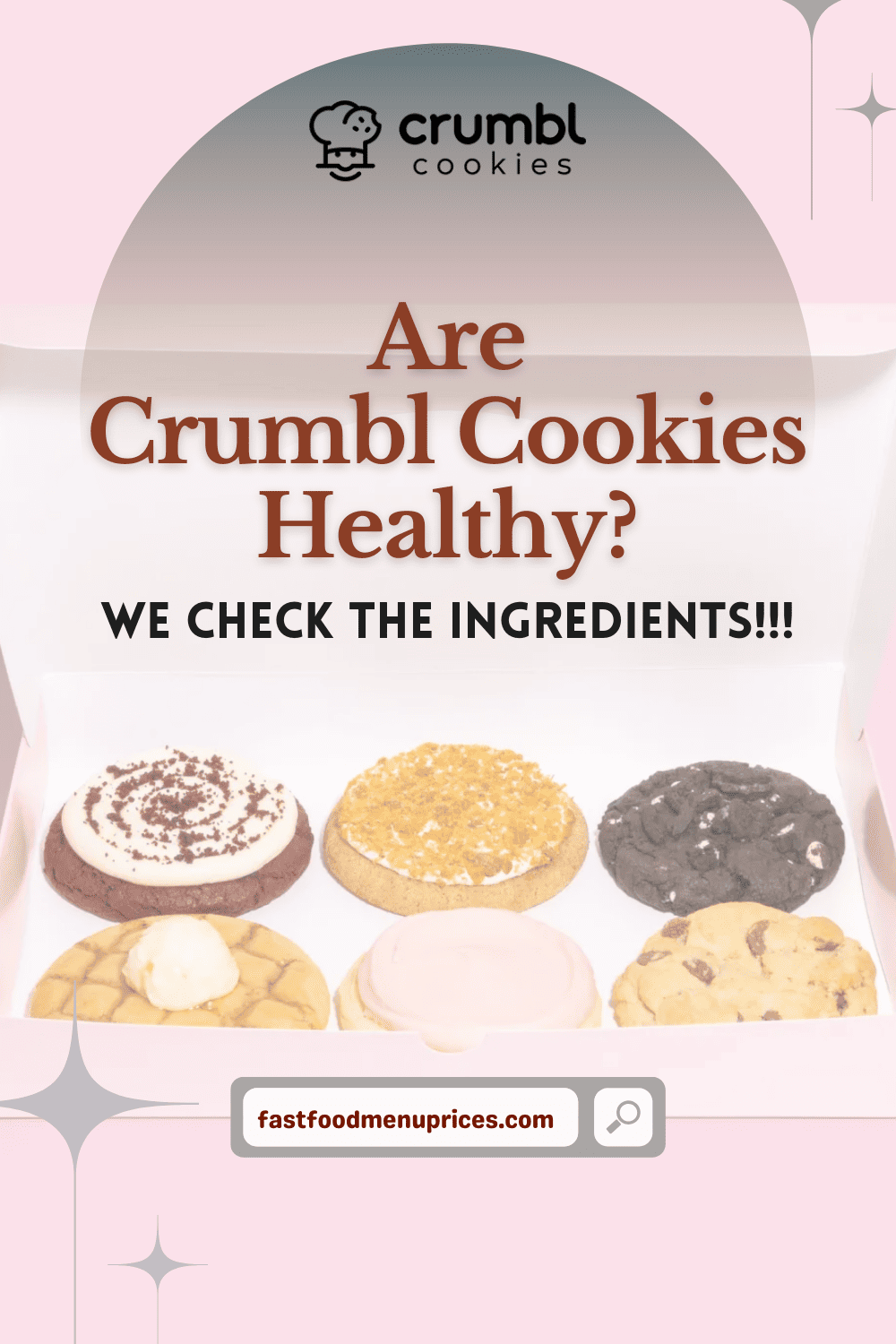Crumbl Cookies has garnered a massive fan base and earned its reputation as “the World’s Best Box of Cookies”. While they market their cookies as freshly baked daily from scratch, and without chemical stabilizers or preservatives, it’s always wise to delve deeper into the ingredients for a clearer understanding.
As a nutritionist, I want to be fair to consider both good and bad and to present you with facts.
Let’s look at Crumbl Cookies ingredients. Are they as healthy as the company says?
In this article
Are Crumbl Cookies All Natural and Healthy?
Crumbl proudly promotes its cookies as freshly baked daily, crafted with natural ingredients, and devoid of preservatives or chemicals. While this is generally accurate, it’s important to note some nuances:
Use of Preservatives: When I checked the nutritional information of Crumbl Cookies, I did observe the inclusion of a few preservatives. While the brand emphasizes natural ingredients, these preservatives are added to extend shelf life or maintain quality.
Caloric Content: Crumbl Cookies have a rather high-calorie content. A single serving typically contains approximately 170 to 210 calories, while a whole cookie is somewhere between 640 to 840 calories. If you are a female weighing 140 pounds, a single cookie is half of your daily calorie allowance!
What Ingredients Do Crumbl Cookies Contain?

All Crumbl Cookies start with the fundamental ingredients that form the base of traditional cookies. Those ingredients include all-purpose flour, sugar, eggs, salt, baking soda, butter, and cornstarch. These essential components provide the cookie’s basic structure and texture.
It’s important to remember that Crumbl Cookies do not cater to special dietary needs or restrictions. Each cookie is prominently labeled to indicate the presence of common food allergens like wheat, milk, eggs, and soy.
Basic Crumbl Cookies Ingredients
When I examine the ingredients of Crumbl Cookies, I see these key ingredients:

- All-Purpose Flour: Crumbl Cookies use a blend of bleached wheat flour, malted barley flour, niacin, iron, thiamin mononitrate, riboflavin, and folic acid as the base for their dough. It’s worth noting that bleached flour, which is part of this mix, undergoes a chemical bleaching process that removes some of its nutrients and fiber. The wheat used for this flour is typically grown using industrial pesticides and weed killers.
- Butter: Crumbl Cookies feature butter made from pasteurized cream and salt.
- Sugar: this includes both brown sugar and regular sugar.
- Milk: Different Crumbl flavors incorporate milk in various forms. For instance, Milk Chocolate Chip Cookies use milk from the milk chocolate chips, which consist of sugar, whole milk powder, cocoa butter, unsweetened chocolate, sunflower and soy lecithin, and vanilla extract. The specific type of milk used may vary depending on the flavor.
- Other Basic Ingredients: Eggs, baking soda, salt, and cornstarch contribute to structure and texture.
Flavor-Specific Ingredients

However, what truly sets each Crumbl Cookie apart is the inclusion of distinctive ingredients that infuse them with their characteristic flavors, aromas, and textures. For example, let’s take the classic Milk Chocolate Chip Cookie as an example. In addition to the basic ingredients, it features milk chocolate chips crafted from a blend of whole milk powder, unsweetened chocolate, cocoa butter, and other carefully selected elements. And these additional ingredients are exactly the secret sauce behind the cookies’ unique and delightful chocolatey flavor.
Some of these ingredients are pretty innocent: cream cheese, lemon juice, cocoa, OREO, gummy worms, vanilla pudding, bananas, and dried fruits.
Others? Not so much.
Here are a few ingredients I would consider controversial, and why:
- High Fructose Corn Syrup (HFCS): HFCS is a processed sweetener derived from GMO cornstarch and is associated with an increase in calorie content in foods. Frequent consumption of high-calorie foods, including those containing HFCS, can contribute to health issues such as heart disease, fatty liver disease, diabetes, and high cholesterol.
- Artificial Colors: artificial colors, often sourced from petroleum dyes, have been linked to common allergies, compromised immunity, and potential carcinogenic effects.
- Natural and Artificial Flavors: While flavors enhance the taste of food, many contain chemicals like sodium benzoate, preservatives, solvents, and emulsifiers, each with its own set of potential health concerns. Sodium benzoate, for instance, can cause allergic reactions and increase the risk of inflammation and oxidative stress.
- BHA (Butylated Hydroxyanisole): BHA is considered a human carcinogen and may also lead to allergic reactions, making it a controversial ingredient with potential health risks.
- Carrageenan: Carrageenan, derived from seaweed, is used to create a creamy consistency in various food products. In the European Union, it is banned due to its potential to cause digestive problems, and it lacks any nutritional value.
- Polysorbate: Polysorbate, a common emulsifier in baked goods, has been linked to alterations in beneficial gut bacteria and may trigger inflammation.
- Mono and Diglycerides: These ingredients, produced as byproducts of oils, contain some trans fats, which are considered unhealthy fats.

When it comes to ingredients, remember that different Crumbl Cookies will have different flavor-specific ingredients, and that will affect their nutritional value and content. For instance, the Milk Chocolate Chip Cookie contains potassium but lacks Vitamin D. The Red Velvet Cream Cookie is rich in vitamin D but lacks potassium. Both flavors contain iron, but the Red Velvet Cream Cookie has more iron.
This being said, there are some strong nutritional points that are often true for Crumbl cookies.
- No Trans Fats: Crumbl Cookies stand out by not containing unhealthy and non-nutritious trans fats. This sets the brand apart from numerous cookie brands that incorporate these less healthy fats into their recipes.
- Protein Content: Each Crumbl Cookie provides a noteworthy 24% of its calorie content from protein. Many other cookie brands have a significantly lower protein count.
- Mineral Contribution: mineral intake can be as much as 4% of the recommended daily value for potassium, and calcium, and 24% for iron.
- Dietary Fiber: many cookies have as much as 16% of dietary fiber per serving.

